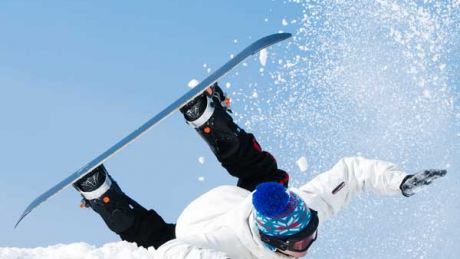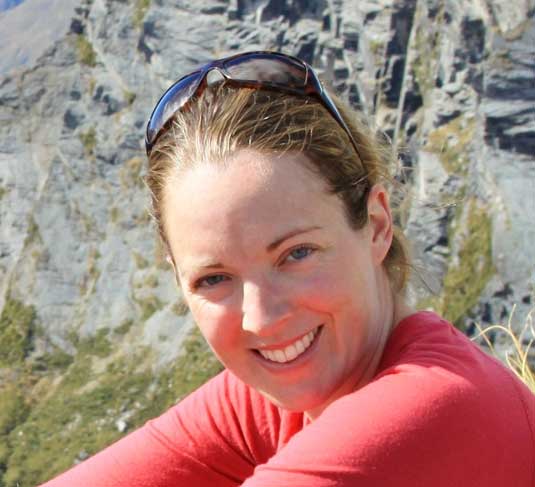How To Prevent Snowboarding Injuries
Physiotherapist Lucy Macdonald explains some of the most common snowboarding injuries and how to treat them

Apart from battered pride, the most common injury when learning to snowboard is a fractured wrist or a damaged coccyx (aka the tailbone). Wearing wrist guards and some padding over your lower back is therefore an absolute must. Once you get past the first few days of constant falls and can manage some sustained riding, you might start to notice niggles in your back and/or knees, which can develop into more consistent pain and begin to encroach on your enjoyment of the white stuff. So, here are some tips on how best to minimise these common aches and pains.
Preventing knee pain
Pain at the front of the knee (anterior knee pain) is a common complaint and can often be reduced by tweaking the position of your knees and your hips. The most common cause of this is a patella-femoral joint dysfunction, which I wrote about in my article about preventing knee injuries while skiing. But there are a couple of remedies specific to snowboarding.
Assess and correct your knee position when snowboarding: Look down at your knees when you are boarding. They should be pointing in the same direction as your feet. If they’re not, the angle that that your feet are fixed on the board should be adjusted accordingly, but remember if you have been snowboarding for a while any change in position will feel alien. Make the adjustments little by little so you can get used to it. Most people let their knees drop inwards slightly, and just a couple of centimetres of turning the knees out can immediately eliminate the pain. This is because poor alignment results in an imbalance in the forces going through the knee causing inflammation and pain in the tendons around your kneecaps and quadriceps.
Don’t bend your hips excessively: In other words, do not ‘sit down’ too deeply. Doing so makes it a lot harder for the quads to work efficiently and puts excessive strain through the patella-femoral joint and tendons. To prevent this it helps to train your glutes with exercises such as squats.
Preventing back pain
Aches and pains in your back can often be alleviated by adjusting the position of the pelvis and lower back to ensure they’re in a neutral position. In the pelvic neutral position the muscles that stabilise the core, as well as the muscles that enable controlled weight transference, are able to work optimally. This is because they are neither in a shortened or elongated position and are therefore able to contract maximally. Here’s how to do that, but please note if you are suffering from acute or chronic back pain, you must see a physiotherapist for a full assessment and diagnosis before attempting any preventative or rehabilitation exercises.
Find and maintain ‘pelvic neutral’: The easiest way to work this out is to lie on your back with your hips and knees bent and feet flat on the floor. Flatten your back against the floor and bring your imaginary tail between your legs without lifting your bottom. This is called a posterior pelvic tilt. Now roll your pelvis in the other direction, curving your back so that there is a gap between your lower back and the floor. This is an anterior pelvic tilt. Pelvic neutral is halfway between both. Now stand up and try the same movement with your feet in a snowboarding position. In the posterior pelvic tilt position your bottom will be tucked in too far, while in the anterior pelvic tilt position it will be sticking out too far. Find half way between the two and this is pelvic neutral. If you struggle to find this position, a physiotherapist can show you and also give you exercises to maintain the position. Once you’ve found your pelvic neutral position you should work on strengthening the muscles that enable you to hold this position by doing the likes of Pilates and yoga – or any kind of balance-based exercise.
Sign up for workout ideas, training advice, reviews of the latest gear and more.

Lucy Macdonald has been a sports physiotherapist since 2004, with experience treating professional and amateur sports people including members of the GB ski and powerlifting teams.
